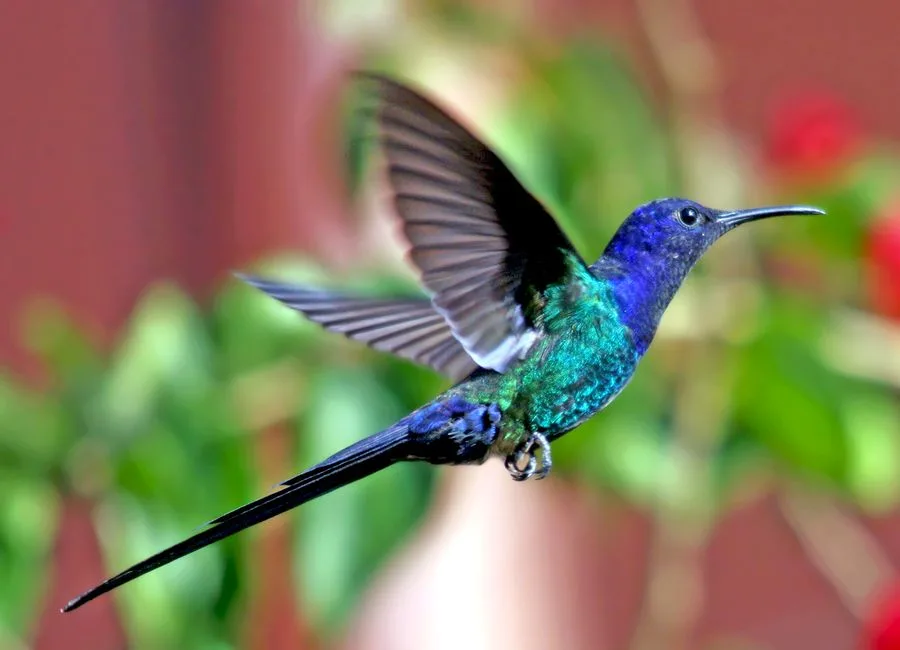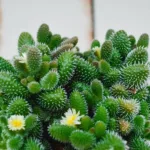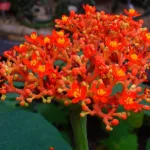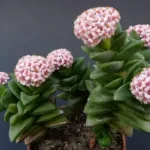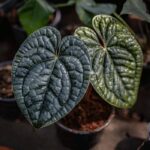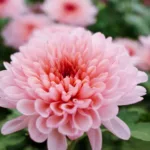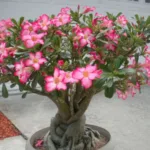table of contents
Introduction
In the enchanting universe of gardens, few presences are as fascinating as that of hummingbirds. These tiny, vibrant birds bring with them a magical aura, transforming any space into a spectacle of color and movement.
The Magic of Color and Movement
Hummingbirds, with their bright feathers and rapid wingbeats, add a unique dose of beauty and liveliness to the environment. Their frequent visits bring with them the promise of moments of contemplation and admiration for those lucky enough to have them around.
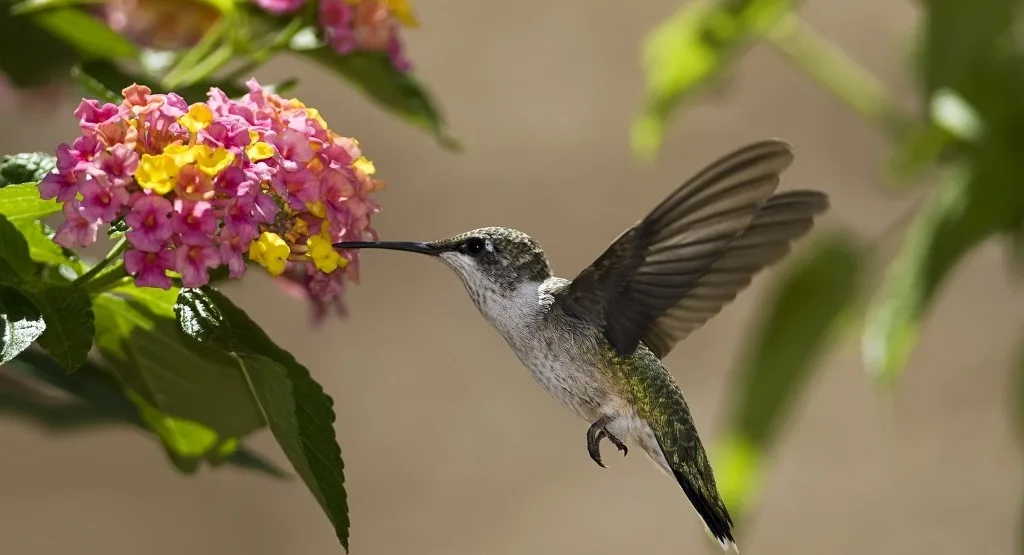
The importance of choosing plants
When creating a garden that attracts these charming birds, the choice of plants plays a crucial role. Attractive plants not only provide food for hummingbirds, but also create an environment conducive to their regular presence.
Plants that enchant
Opting for flowers in vibrant shades, such as reds, oranges and pinks, is an effective strategy for attracting hummingbirds. In addition, considering the presence of tubular flowers, such as salvias and trumpets, further increases the chances of receiving these charming visitors.
By designing a garden with the aim of attracting hummingbirds, we are not only growing plants, but also creating a space that celebrates the unique beauty of these fascinating birds. In the next chapter, we’ll explore the different plant species that can transform your garden into a true hummingbird paradise.
1. Tear of Christ (Clerodendrum thomsoniae)
Plant description
Characteristics: Clerodendrum thomsoniae, known as Christ’s Tear, is an African climbing plant with dark green leaves. Its unique flowers stand out for their white petals and red calyx, creating an enchanting look.
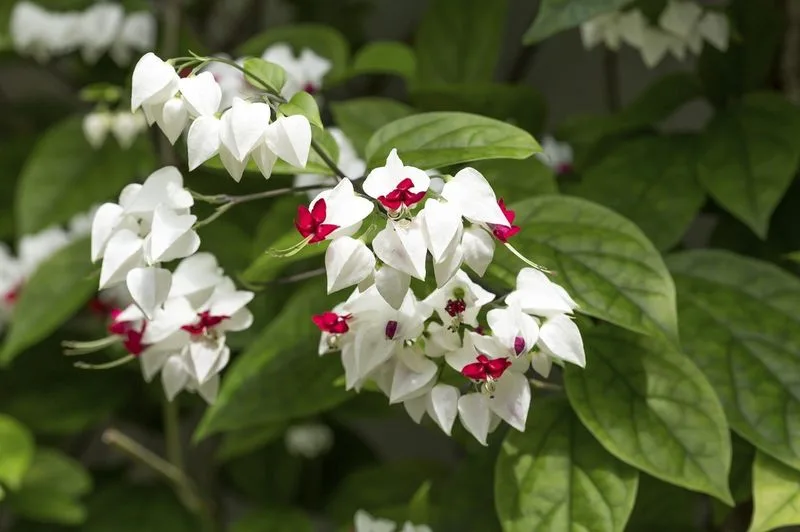
Attraction for hummingbirds
Irresistible flowers: The tubular flowers of the Lágrima de Cristo are an invitation to hummingbirds. The combination of vibrant colors and shape facilitate access to nectar, making it a nutritious source for these enchanting birds.
Attraction Strategies:
- Vibrant Colors: The intense red attracts hummingbirds.
- Tubular shape: The structure facilitates access to the nectar.
By adding the Tear of Christ to your garden, you provide an environment conducive to regular visits from these fascinating birds. The next section will look at complementary plants, turning your garden into a sanctuary for hummingbirds.
2. Kiss (Impatiens walleriana)
Variety of Colors
Charm in Diversity: Impatiens walleriana, affectionately called Kiss, stands out for its wide range of colors. This plant has a palette that ranges from soft to vibrant tones, providing options for all tastes and garden styles.
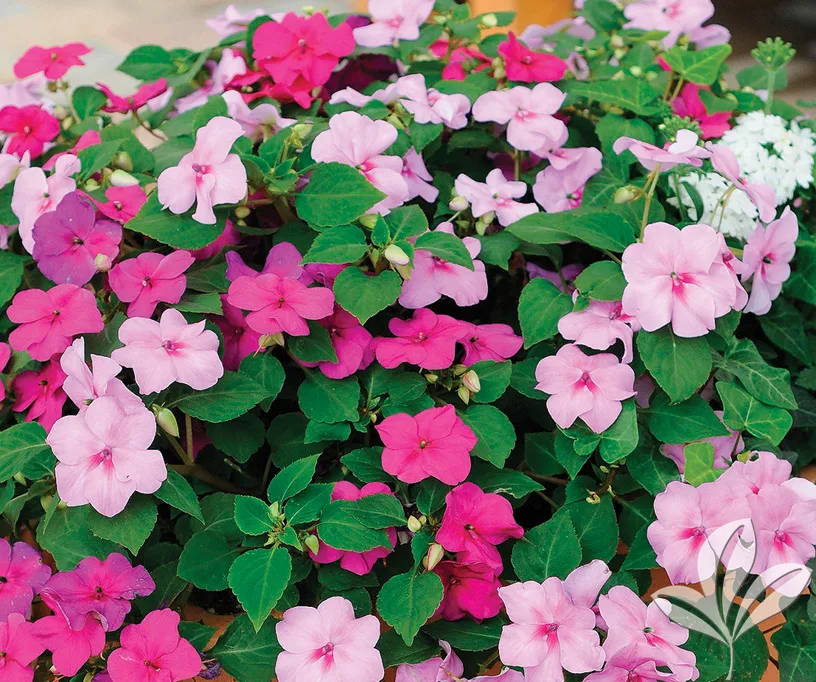
Attraction for Hummingbirds
Invitation to Visit: Kissing flowers are like magnets for hummingbirds. Their unique shape and bright colors, such as pink and red, create an irresistible backdrop for these birds. Growing the Kiss is guaranteed to attract the vibrant energy of these winged visitors.
Care and Considerations
Growing Tips: When incorporating the Kiss into your garden, consider a few guidelines:
- Well-drained soil: The Kiss prefers moist soil, but it is crucial to ensure good drainage to prevent water accumulation.
- Adequate Light: This plant appreciates filtered light, avoiding direct exposure to strong sunlight.
- Regular watering: Keep the soil evenly moist, avoiding both drying out and overwatering.
Growing the Kiss adds not only dazzling colors to your garden, but also the promise of frequent visits from the charming hummingbirds. In the next section, we’ll explore other plants that can complement the Kiss, providing a truly irresistible garden for these birds.
3. Bela-Emilia (Plumbago auriculata)
Charming Characteristics
Unique flower spikes: Plumbago auriculata, known as Bela-Emilia, captivates the eye with its distinctive flower spikes. These long, elegant floral structures, filled with tubular flowers, are a visual spectacle that instantly attracts attention.
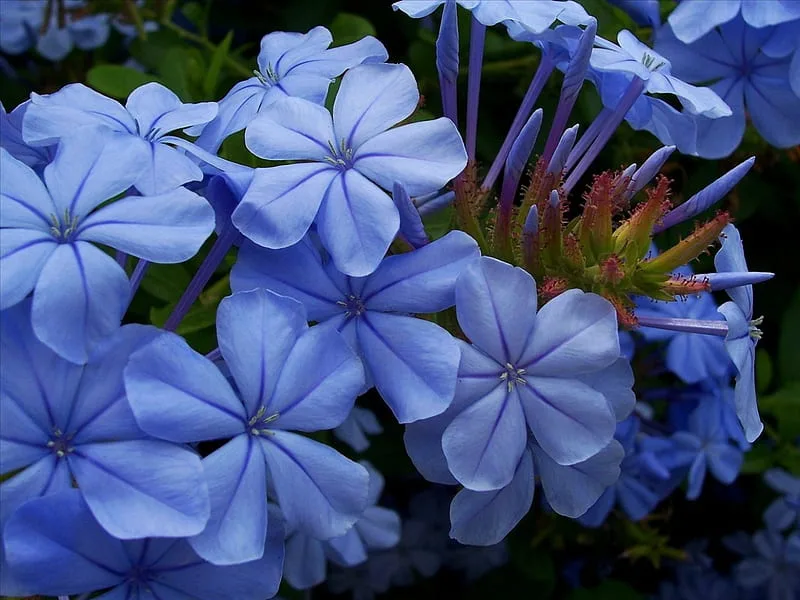
Attraction for Hummingbirds
Calling Hummingbirds: Bela-Emilia’s flower spikes are real magnets for hummingbirds. Its elongated shape and abundance of tubular flowers provide a rich source of nectar, making it irresistible to these charming birds.
Growing Suggestions
Optimizing Attraction: To maximize the presence of hummingbirds in your Bela-Emilia garden, consider the following suggestions:
- Sunny Location: Plant Bela-Emilia in locations with direct sunlight, providing ideal conditions for flowering.
- Well-drained soil: Make sure the soil offers good drainage to prevent water from accumulating in the roots.
- Regular Pruning: Promote healthy growth and encourage continuous flower production through regular pruning.
By incorporating Bela-Emilia into your garden and following these suggestions, you create a perfect environment for the constant enjoyment of hummingbirds. In the next section, we’ll explore other plants that can complement the Bela-Emilia, transforming your garden into an irresistible haven for these fascinating birds.
4. Hibiscus (Hibiscus spp.)
Attractive Varieties for Hummingbirds
Enchanting Diversity: The genus Hibiscus spp. offers a variety of species known to attract hummingbirds. Their vibrant, nectariferous flowers make these plants ideal choices for those wishing to create a garden attractive to these enchanting birds.
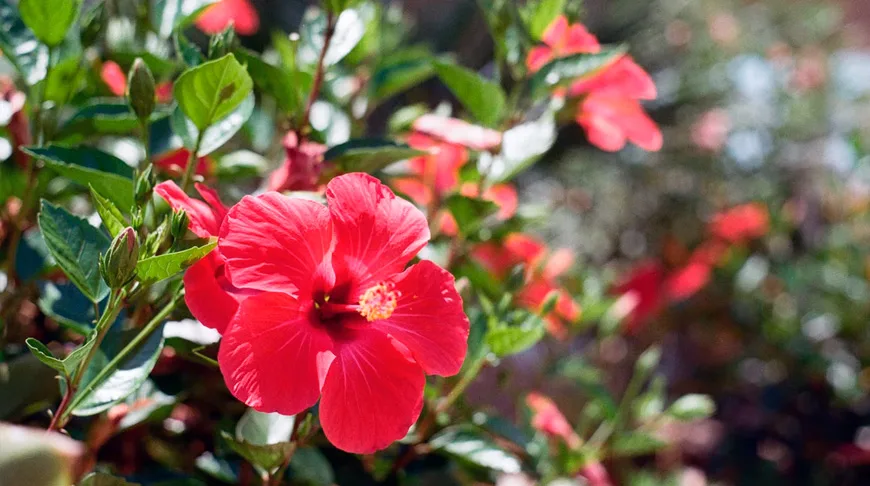
Ideal Growing Conditions
Specific Care: When growing Hibiscus to attract hummingbirds, consider the following ideal conditions:
- Well-Drained Soil: Ensure that the soil is well-drained to avoid water accumulating in the roots.
- Adequate Light: Hibiscus thrives in direct sunlight, so make sure you provide a well-lit spot.
- Moderate Watering: Keep the soil consistently moist, but avoid overwatering.
Recommended Varieties
Popular Picks: Some varieties of Hibiscus that are particularly attractive to hummingbirds include:
- Hibiscus rosa-sinensis (Chinese Hibiscus): Large, vibrant flowers in a variety of colors.
- Hibiscus syriacus (Pink Hibiscus): Bell-shaped flowers, providing an additional source of nectar.
By incorporating these varieties into your garden and following the cultivation guidelines, you create an environment conducive to the regular presence and appreciation of hummingbirds. In the last section, we’ll explore additional tips for making your garden truly irresistible to these fascinating birds.
5. Lantana (Lantana camara)
Color Diversity and Attraction for Hummingbirds and Butterflies
Chromatic explosion: Lantana camara stands out for its spectacular diversity of colors, providing a true chromatic spectacle in the garden. In addition to its visual beauty, Lantana is known for attracting not only hummingbirds but also butterflies, making it a multifunctional choice for those who want to create a vibrant environment.
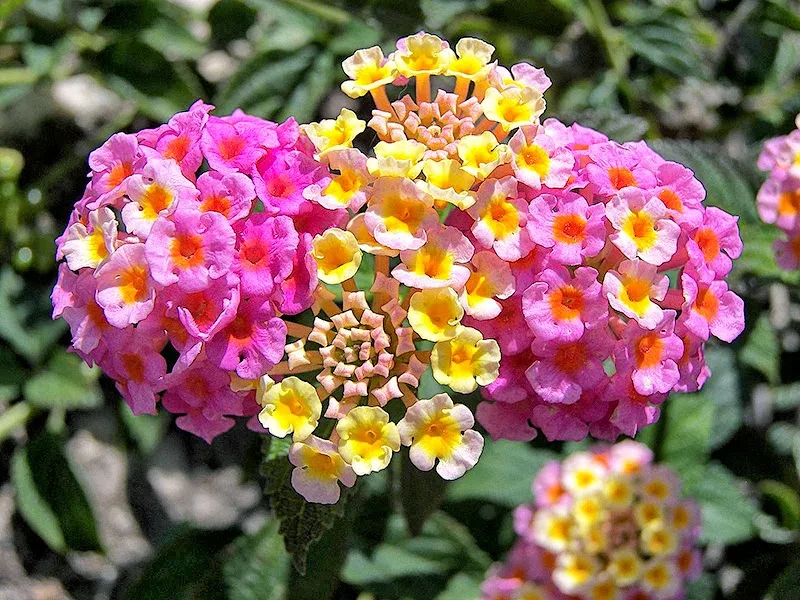
Tips for Keeping Lantana Healthy
Essential Care: To ensure that your Lantana stays healthy and lush, consider the following tips:
- Well-Drained Soil: Make sure the soil offers good drainage to prevent the roots from waterlogging.
- Sun Exposure: Lantana thrives in direct sunlight, so choose well-lit locations for planting.
- Regular Pruning: Promote healthy growth and encourage continuous flowering through regular pruning.
- Moderate Watering: Keep the soil slightly moist, avoiding both dryness and overwatering.
Irresistible colors and aroma
Popular Varieties: Some varieties of Lantana that are particularly appreciated by hummingbirds include:
- Lantana camara ‘Miss Huff’: With orange and yellow flowers, it is an attractive choice for these birds.
- Lantana camara ‘Mozelle’: Features flowers in shades of pink and red, adding visual variety to the garden.
By following these care tips and choosing attractive varieties, you not only maintain the health of the Lantana, but also turn your garden into a paradise for hummingbirds and butterflies. In the final section, we’ll bring all the tips together to create a comprehensive guide to a charming garden that’s attractive to these fascinating birds.
6. Salvia (Salvia spp.)
Tubular Shape and the Attraction for Hummingbirds
Irresistible design: Salvia spp. flowers have a unique feature that is irresistible to hummingbirds: their tubular shape. This structure is perfectly adapted to the shape of these birds’ beaks, providing easy access to nectar.
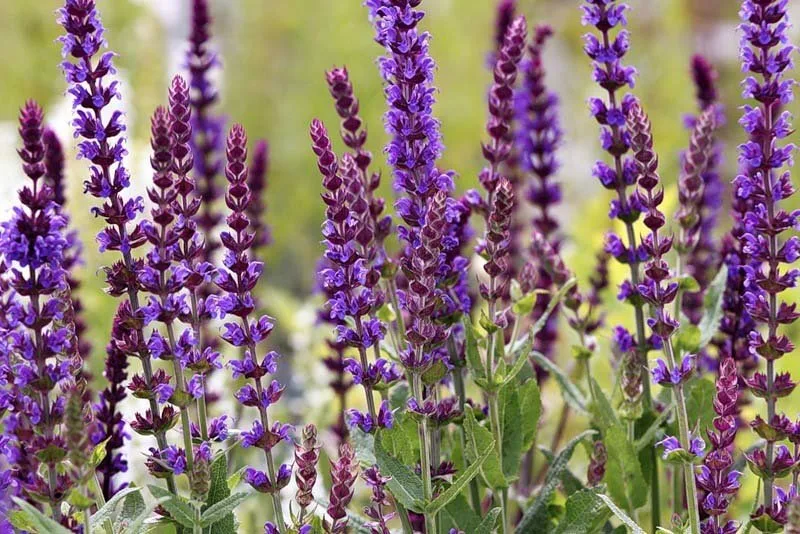
Varieties appreciated by hummingbirds
TheRight Choices for the Garden: When selecting Salvia varieties to attract hummingbirds, consider the following options:
- Salvia guaranitica (Blue Salvia): With its dark blue flowers, this is a popular choice with hummingbirds.
- Salviamicrophylla (Mexican sage): Featuring a variety of colors, such as red and pink, it is a constant source of nectar.
- Salvia leucantha (Salvia-anis): Known for its white flowers and purple hairs, it is a visual and food attraction for hummingbirds.
Growing to Attract Hummingbirds
Specific Care: To ensure that the Salvia in your garden is a magnet for hummingbirds, pay attention to the following care:
- Well-Drained Soil: Make sure the soil offers good drainage to avoid root problems.
- Sun Exposure: Salvia thrives in direct sunlight, so choose sunny locations for planting.
- Regular Pruning: Encourage healthy growth and extend the flowering period by pruning regularly.
By incorporating Salvia into your garden and choosing attractive varieties, you create an environment conducive to the constant presence and appreciation of hummingbirds. In the final section, we will consolidate all the information to create a comprehensive guide to a charming garden that is attractive to these fascinating birds.
7. Petunia (Petunia spp.)
Vibrant Colors and the Hummingbird Dance
The Chromatic Attraction: Petunia spp. capture not only the eyes, but also the hearts of hummingbirds. With their vibrant colors ranging from muted tones to intense hues, petunias create an irresistible visual spectacle, luring these enchanting birds into a visiting ballet.
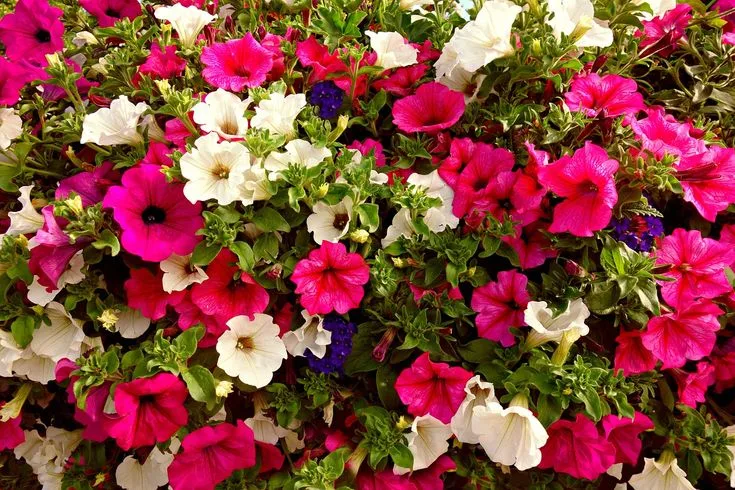
Proper Care of Petunias
Tips for Radiant Flowers: To keep your petunias healthy and attractive to hummingbirds, follow these tips:
- Well-drained soil: Ensure good drainage to prevent water from accumulating in the petunias’ roots.
- Ideal light: Petunias thrive in direct sunlight, so choose well-lit locations for planting.
- Regular fertilization: Provide adequate nutrients through regular fertilization to encourage vigorous growth and continuous flowering.
- Removing wilted flowers: Remove wilted flowers to encourage the production of new flower buds.
Charming varieties
Popular Picks: Some varieties of petunias that are especially appreciated by hummingbirds include:
- Petunia x hybrida ‘Purple Wave’: With its purple flowers and cascading growth, it is an irresistible attraction.
- Petunia x hybrida ‘Shock Wave Coral Crush’: Featuring an enchanting coral hue, it attracts the eye and hummingbirds.
By following these care guidelines and choosing attractive varieties, you will not only keep your petunias radiant, but also transform your garden into a captivating haven for hummingbirds. In the last section, we’ll consolidate all the information to create a comprehensive guide to an irresistible garden for these fascinating birds.
8. Alamanda (Allamanda cathartica)
Irresistible Attraction: Yellow Flowers and Hummingbirds
Flowers that enchant: Allamanda cathartica, known as Alamanda, has an irresistible attraction for hummingbirds, mainly due to its vibrant yellow flowers. The relationship between the yellow flowers and these enchanting birds creates an unparalleled visual spectacle in the garden.
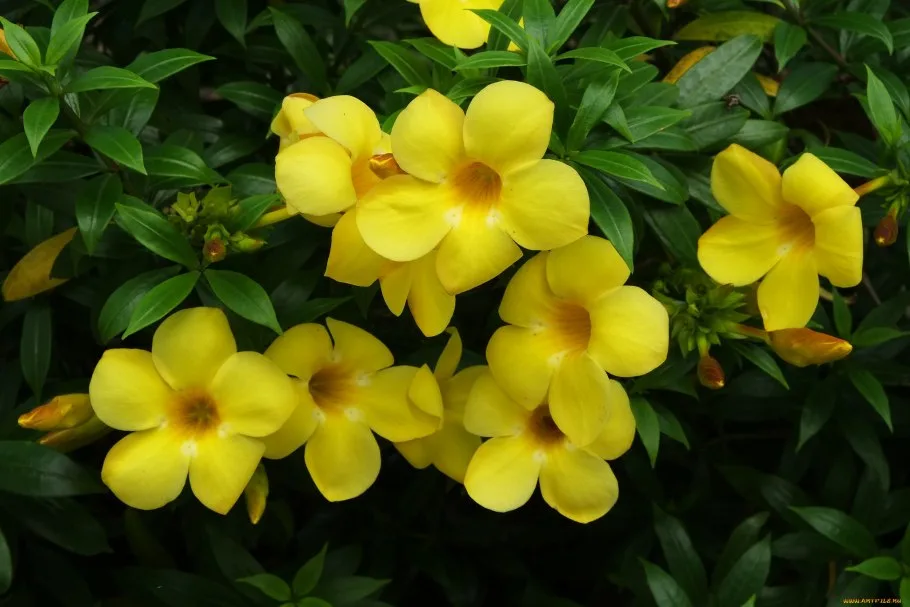
Integrating Alamanda into the Garden
Tips for Successful Cultivation: To integrate Alamanda into your garden and attract even more hummingbirds, consider the following suggestions:
- Adequate sun exposure: Alamanda thrives in direct sunlight, so choose well-lit locations for planting.
- Well-Drained Soil: Make sure the soil offers good drainage to avoid root problems.
- Strategic Pruning: Carry out regular pruning to control growth and encourage more abundant flowering.
- BalancedFertilization: Provide a balanced fertilizer to promote healthy development and a profusion of flowers.
Charming Variety
Allamanda cathartica ‘Hendersonii’: A popular variety of Alamanda, known for its vibrant yellow flowers and compact shape, providing a special highlight to the garden.
By following these guidelines and integrating Alamanda into your green space, you not only grow a stunning plant, but also create an environment that attracts and captivates hummingbirds. In the final section, we’ll consolidate all the information to create a comprehensive guide to a truly irresistible garden for these fascinating birds.
9. Grevillea (Grevillea spp.)
Plumose Flowers and Their Charm for Hummingbirds
Beauty in fluff: The feathery flowers of the Grevillea spp. offer a unique spectacle that attracts hummingbirds irresistibly. With their peculiar appearance and promise of nectar, these flowers become real points of attraction for these enchanting birds.
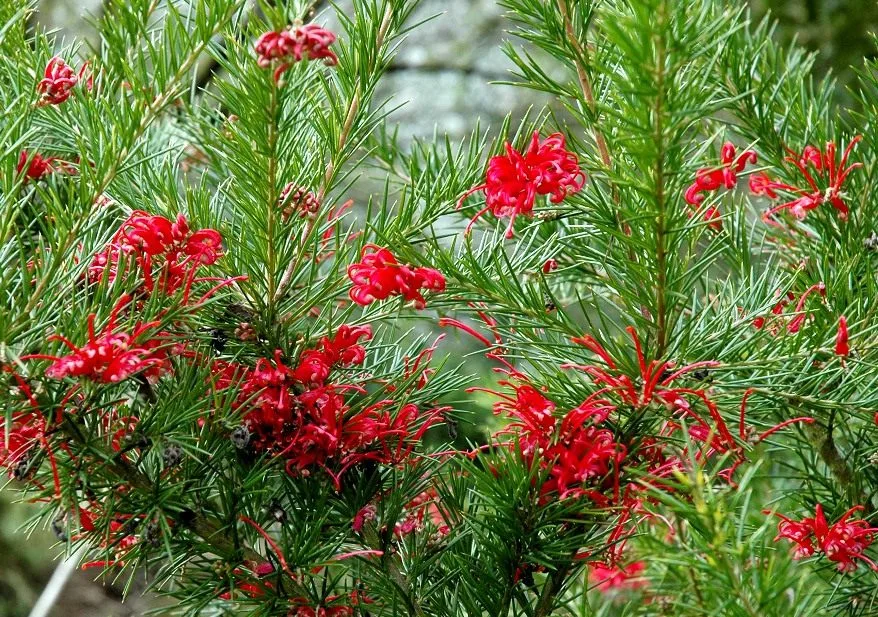
Successful Grevillea cultivation
Essential Tips: To ensure successful Grevillea cultivation and keep your garden a hummingbird magnet, take the following tips into consideration:
- Well-Drained Soil: Make sure the soil offers good drainage to prevent water from accumulating in the roots.
- Adequate sun exposure: The Grevillea thrives in direct sunlight, so choose sunny locations for planting.
- Strategic Pruning: Prune regularly to control the shape of the plant and encourage continuous flower production.
- Moderate Irrigation: Maintain moderate irrigation to ensure slightly moist soil, but avoid overwatering.
Notable Varieties
Grevillea ‘Robyn Gordon’: A popular variety, known for its feathery red flowers and ability to attract hummingbirds with its abundant supply of nectar.
By following these cultivation guidelines and choosing attractive varieties, you not only maintain the Grevillea’s health, but also turn your garden into an irresistible haven for hummingbirds. In the last section, we’ll consolidate all the information to create a comprehensive guide to a truly enchanting garden attractive to these fascinating birds.
10. Milkcup (Zantedeschia spp.)
Inflorescences and the Dance of the Hummingbirds
Elegant Shape: The inflorescences of Zantedeschia spp. popularly known as Copo-de-Lite, display an elegant shape that does not go unnoticed by hummingbirds. Its unique structure attracts these birds, making it a charming addition to any garden.
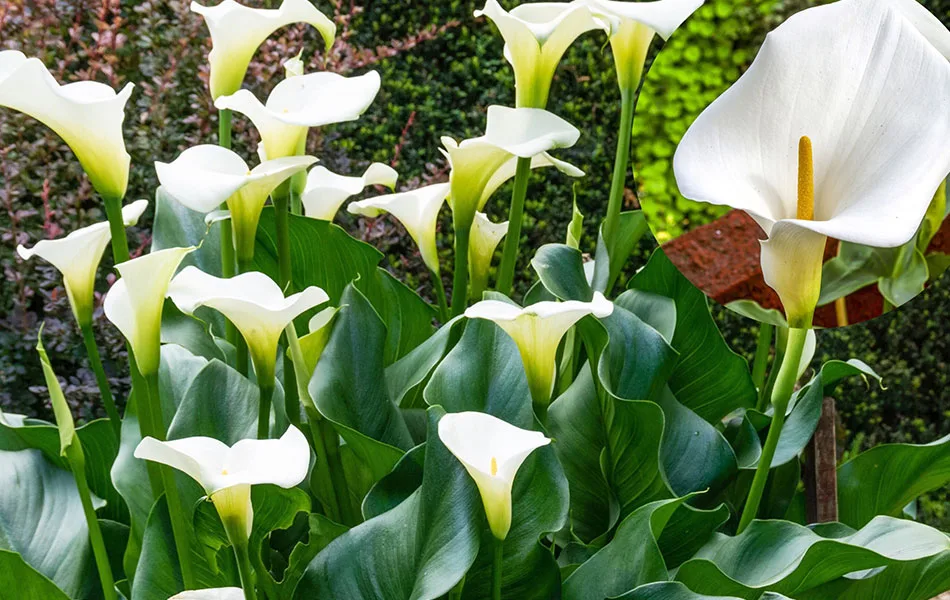
Practical cultivation of the Milkcup
Essential Tips: To successfully grow the Milkcup and ensure its attractiveness to hummingbirds, follow these practical tips:
- Rich, well-drained soil: The Milkcup thrives in soil rich in organic matter and well-drained.
- Adequate sunlight: Choose locations with directsunlight to ensure the plant’s healthy development.
- Moderate Irrigation: Keep the soil slightly moist, avoiding waterlogging of the roots.
- Balanced Fertilization: Providing a balanced fertilizer during the growing season will contribute to robust flowering.
Charming varieties
Zantedeschia ‘White Giant’: A remarkable variety, with its stately white inflorescences adding a touch of elegance to the garden and attracting hummingbirds.
By following these practical cultivation guidelines and choosing attractive varieties, you not only keep the Milkcup healthy, but also turn your garden into an irresistible place for hummingbirds. In the final section, we’ll consolidate all the information to create a comprehensive guide to a truly enchanting garden attractive to these fascinating birds.
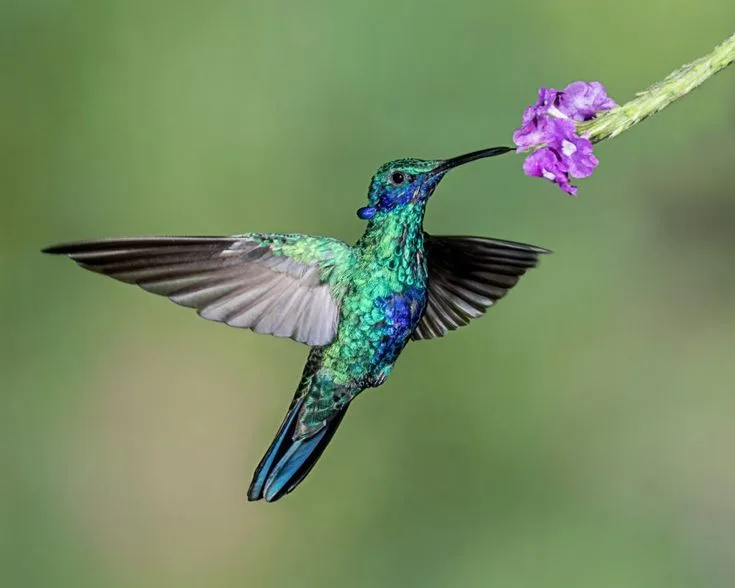
Conclusion
Throughout this guide, we have explored a selection of 10 enchanting plants that have the power to transform your garden into an irresistible paradise for hummingbirds. Let’s recap these plants, highlighting their distinct characteristics that make them real magnets for these fascinating birds:
- White-flowered(Clerodendrum thomsoniae): Unique flowers with white petals and a red calyx, attracting hummingbirds due to their tubular shape.
- Kiss (Impatiens walleriana): A variety of vibrant colors that attract hummingbirds, providing a unique visual spectacle.
- Bela-Emilia (Stachytarpheta spp.): Distinctive flower spikes and tubular flowers that enchant hummingbirds.
- Hibiscus (Hibiscus spp.): Vibrant varieties and bell-shaped flowers, ideal for attracting hummingbirds.
- Petunia (Petunia spp.): Vibrant colors that attract hummingbirds, creating a captivating garden.
- Alamanda (Allamanda cathartica): Vibrant yellow flowers that exert an irresistible appeal on hummingbirds.
- Salvia (Salvia spp.): Tubular flowers and a variety of colors, making it the right choice for attracting hummingbirds.
- Lantana (Lantana camara): Vibrant colors and a variety of shades, attracting hummingbirds and butterflies.
- Grevillea(Grevillea spp.): Feathery flowers that enchant hummingbirds, creating a unique visual spectacle.
- Milkcup (Zantedeschia spp.): Elegant inflorescences that attract hummingbirds, adding a sophisticated presence to the garden.
We encourage you to create a garden that not only celebrates the beauty of plants, but also serves as a constant invitation to the graceful dance of hummingbirds. By combining these plants in your green space, you will not only provide a conducive environment for these enchanting birds, but also create a truly enchanting setting to enjoy. Cultivating a garden that attracts hummingbirds not only benefits these birds, but also enriches your outdoor experience, providing magical moments of observation and connection with nature. Let your garden bloom with color, movement and life, becoming a welcoming refuge for hummingbirds and a place of wonder for all who visit.


